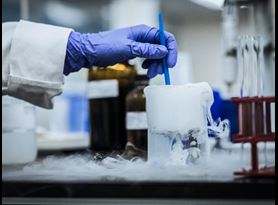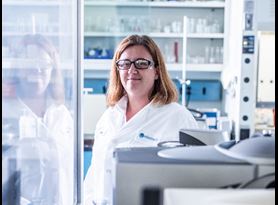Element offers comprehensive support for the entire product development life cycle. With decades of experience supporting a variety of industries and product platforms including consumer and personal care products, nutraceuticals and dietary supplements and industrial products, our consultative teams of expert formulators assist companies of all sizes, from start-ups to established brands.
Typically, depending on available resources, new product formulations are developed either within a company’s internal R&D laboratory or at an independent laboratory partner, such as Element. Often, outsourcing product development activities can expedite time-to-market, as well as result in cost savings. Element’s teams of engaged and consultative expert formulators have decades of experience and an unmatched depth and breadth of expertise and capabilities, along with a proven track record of success developing a wide range of products.
Prior to embarking on the product development process, it is imperative to research similar, competitive products to identify both strengths and weaknesses. It is also critical to research existing patents to ensure the new product will not violate any legal restrictions if the product is too similar to an existing product on the market.
Significant product development resources
A plethora of resources are available, including listings of common ingredients frequently used within multiple types of formulations. Although resources will vary from product to product and between industries, at times, toll manufacturers and distributors are willing to provide valuable information to potential customers, including details regarding formulation(s) and/or discounted testing. However, it is important to keep in mind that some contract/toll manufacturers will retain the rights to the final product created, and customers can find themselves potentially locked into long-term contracts. Additionally, there is a risk of losing access to a formulation in these scenarios.
When you partner with Element, the assignment of intellectual property will be clearly defined within the project scope. Furthermore, our scientists have successfully recovered many lost and/or unknown formulas with our deformulation and reformulation services. Element’s subject matter experts have provided insights as to the basics of product formulation and the product development process.
The product development process
When formulating a new product, many smaller batches are produced to compare appearance, performance and texture to analyze and determine which version is the safest and most efficacious. Once the best version is selected, a larger batch is developed for additional testing before finalizing the formulation and embarking on scale-up activities. At times, minor differences in batches can occur as manufacturing processes are refined. Therefore, formulations may need to be modified slightly for larger scale production. Once the formulation is perfected, the product is deemed ready to be transferred to an external manufacturer or to in-house production facilities.
The Element advantage
Element’s combined decades of experience have helped organizations of all sizes from small start-up ventures to large, established manufacturers turn innovative product ideas into on-the-shelf products. Our skilled teams of formulators have the experience and expertise developing innovative personal care products, coatings, OTC products, adhesives, cleaners and household products. Furthermore, Element can tailor any protocol and project to client specifications, and we have a proven track record of delivering within tight timelines. With extensive wrap-around services, including shelf life testing, product performance and marketing claims testing, Element is the trusted partner of leading organizations.
To learn more about our extensive suite of product development and wrap-around services, or to speak with one of our experts, contact us today.
Learn more

Product Development
Element's leading product development labs have a track record of success innovating, optimizing and formulating products for various industries and applications.

Green & Eco-Friendly Product Development
The demand for environmentally and eco-friendly products is growing rapidly. Element offers best-in-class green and eco-friendly product development.

Product Reformulation Strategy
Optimize and reformulate existing products to increase efficacy and reduce manufacturing costs with Element's product reformulation services.

Product Deformulation
Element’s expert chemists have successfully reverse engineered hundreds of formulations for a huge array of products and provided detailed information on the identity and quantity of ingredients.

